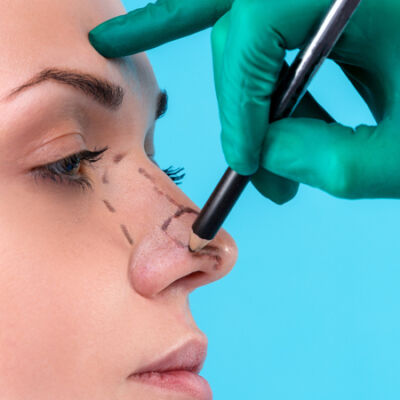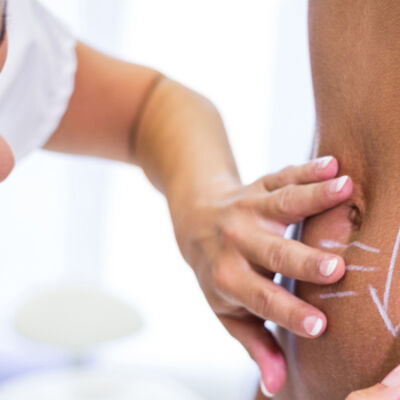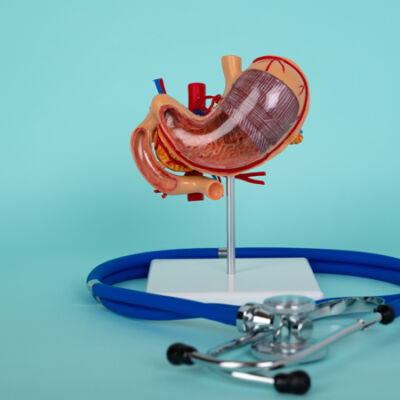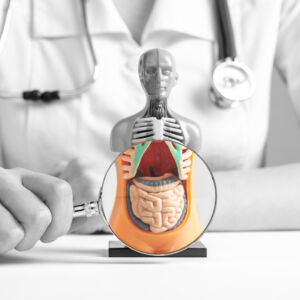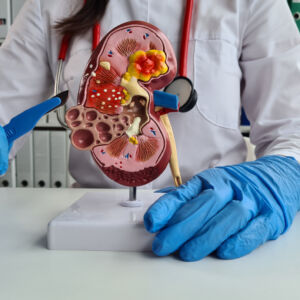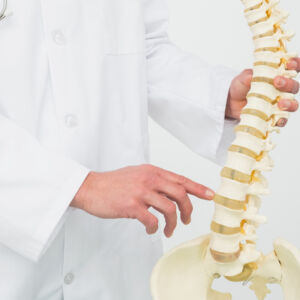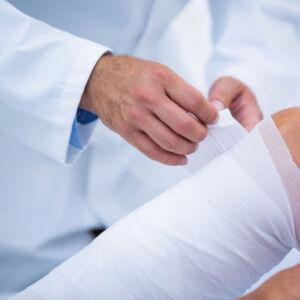In our plastic and aesthetic surgery department, our motto is: Let’s take care of your body together.
Plastic surgery is the surgical speciality that includes all the procedures performed by a cosmetic surgeon aimed at modifying or improving a visible part of the body that the patient considers unsightly. There are several causes that lead to surgery aesthetic; remodelling of a damaged part of the human body following an accident, a genetic disease or a congenital malformation…
It happens that some parts of our body, visible or not, displease us, even make us uncomfortable in front of others. Cosmetic surgery aims to change or improve these areas.


BREAST SURGERY
Our medical teams (part of our Plastic and Aesthetic surgery Department) support the following operations:
- Breast augmentation: Breast implants are indicated for small, asymmetrical breasts. Breast augmentation involves the insertion of silicone prostheses.
- Breast reduction (mammoplasty): The surgeon removes excess fat surrounding the breast.
- Breast lift: The surgeon may lift and curve the breast. The procedure is performed under general anaesthesia and is carried out in two stages: “a concentration of the mammary gland, then a remodelling of the skin”.
- Inverted nipple correction surgery
- Reconstructive surgery after a tumour (breast reconstruction) Reconstructive surgery after a tumour is the process of restoring body structures that have been damaged by tumours. The aim of reconstructive surgery is to restore as much of the patient’s function and appearance as possible so that they can lead a normal life. Reconstructive surgeons use their skills to restore physical function as well as emotional well-being.
SILHOUETTE CORRECTION
Implants, liposuction and abdominoplasty are the three main types of cosmetic surgery. Depending on the area you wish to improve or reshape, surgery offers several solutions:
- Liposculpture/liposuction (abdomen, hips, thighs, knees): Reduces fat deposits deep in the hips, saddlebags, calves, ankles, arms, neck, etc.
- The thigh lift
- Arm lifting (brachioplasty)
- Abdominoplasty
- Tummy tuck or abdominoplasty: Abdominoplasty, also known as a tummy tuck, is a surgical procedure to remove excess skin and fat from the abdomen and tighten the underlying muscles. It can be performed alone or in conjunction with liposuction.
- The placement of implants in the buttocks, calves or pectoral muscles.
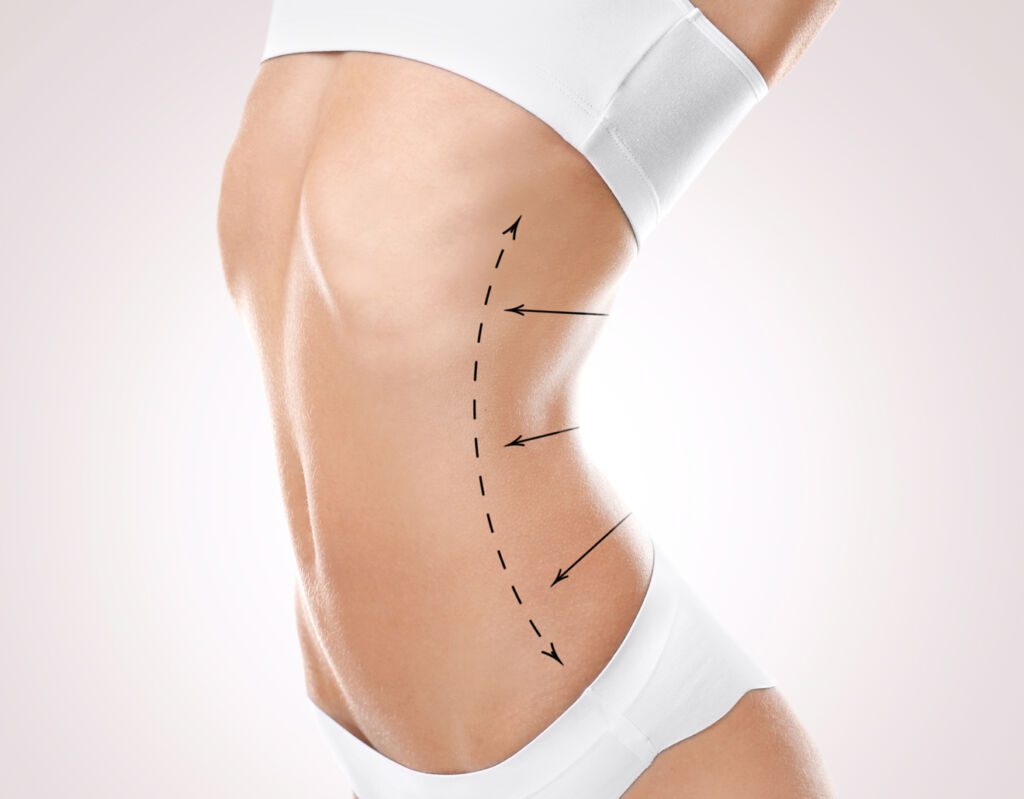
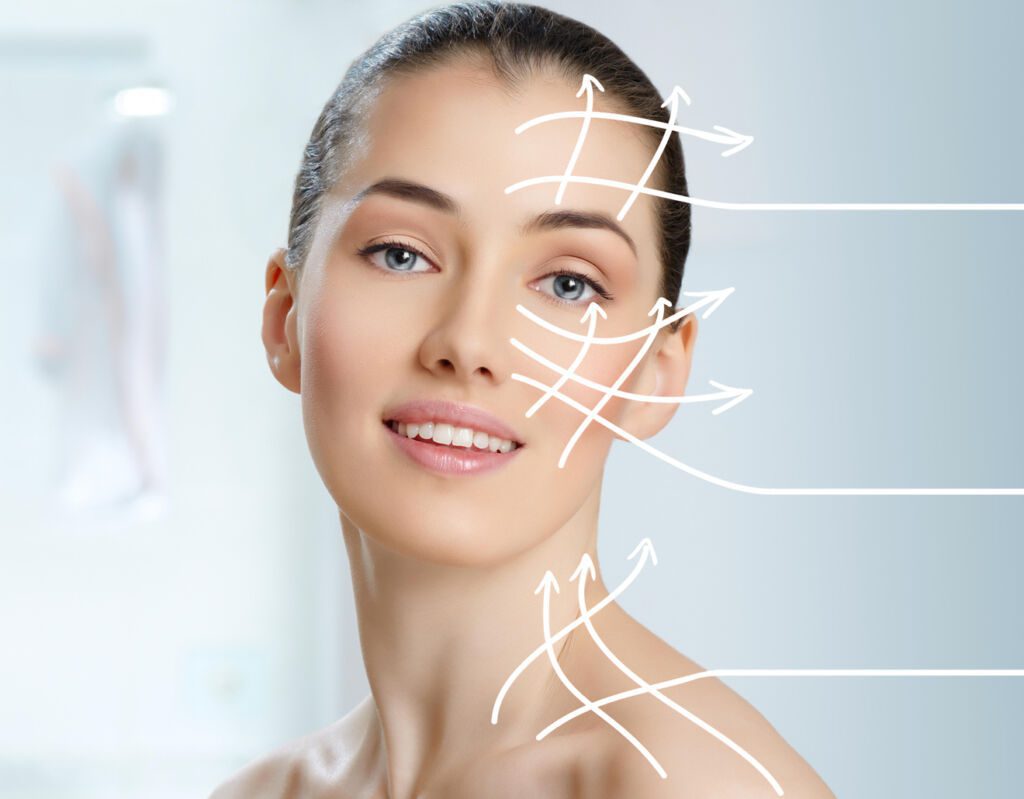
FACIAL SURGERY
There are many types of cosmetic facial surgery. This term covers a wide range of facial rejuvenation techniques with different objectives.
- Nose surgery (rhinoplasty) alters the morphology of the nose in an aesthetic or pathological setting (either functional or aesthetic);
- Blepharoplasty (eye surgery) removes excess skin from the eyelids and any fat deposits in the upper and/or lower eyelids.
- Facelift
- Fronto-temporal facelift
- Neck lift
- Chin surgery or genioplasty
- Ear surgery or otoplasty
You ask, our teams answer.
F.A.Q
Plastic surgery is a branch of surgery that deals with the correction, restoration, reconstruction and/or enhancement of the body. In plastic surgery, the aesthetic goal is to improve the patient’s appearance and self-image through surgical or non-surgical means. Plastic surgery should not be confused with cosmetology or aesthetics. Aesthetic procedures performed by a physician should not be confused with those performed by an aesthetician and vice versa.
Many aesthetic procedures are considered elective, as they are not necessary to sustain life or health. However, the number of such procedures has increased in many countries since 2000, as these treatments have become more affordable for wider sections of the population. In some cases, their availability has been limited by government restrictions.
Plastic surgery is generally divided into three categories: reconstructive surgery, cosmetic surgery and paediatric plastic surgery.
– Reconstructive procedures are designed to correct defects in parts of the body that have been damaged by trauma or disease.
– Aesthetic procedures aim to improve appearance without altering other aspects of normal anatomy or physiology (e.g. rhinoplasty).
– Paediatric plastic surgery is for children with congenital deformities or who are born with an abnormal appearance.
A cleft lip (part of our Plastic and Aesthetic surgery Department) is a congenital deformity of the upper lip that results from incomplete closure of the embryonic cleft palate. The cleft is usually in the upper lip, between the nose and mouth. It can be mild or severe, both in appearance and in the degree of functional impairment.
The degree of functional impairment varies greatly depending on the extent of the deformity and its effect on speech, eating, breathing and hearing.
There are different types of cleft lip:
- Complete cleft lip (cleft lip and palate)
- Incomplete cleft lip (cleft lip without cleft palate)
- Partial cleft uvula
Lipofilling (part of our Plastic and Aesthetic surgery Department) is a cosmetic procedure in which fat is injected into the lips to improve their appearance. It is most commonly used for lip augmentation, but can also be used to correct or eliminate wrinkles in the lower third of the face (smoker’s lines) and to reduce the appearance of jowls.
Lipofilling uses your own fat cells, which are removed from a part of your body by liposuction and then injected into your lips. It can be done on its own or as part of another cosmetic procedure, such as a face or neck lift. Lipofilling can also be combined with other procedures to give your lips, jawline and chin a fuller appearance.
As with any surgical procedure, lipofilling carries some risks and side effects. Some patients experience swelling, bruising and bleeding at the injection site for a few days after treatment; others may also experience mild pain or discomfort for a few days after treatment. In very rare cases, some patients develop an infection at the injection site; if this happens, you should contact your surgeon immediately so that he or she can prescribe antibiotic treatment and monitor you closely until you have fully recovered from the infection.
Abdominoplasty (part of our Plastic and Aesthetic surgery Department) is a surgical procedure to remove excess fat and skin from the abdomen to make it look firmer and more toned. It can also help relieve back pain caused by being overweight (obesity).
Abdominoplasty is most commonly performed on people who have a large amount of fat stored in the abdominal area. This is known as lipodystrophy or lipohypertrophy (swelling or accumulation of fat). Abdominoplasty can also be performed on patients whose skin has become flabby after significant weight loss.
The procedure is performed through several small incisions in the lower abdomen, allowing the surgeon to access the underlying fat and tissue. Some surgeons prefer to make a single vertical incision along the abdomen, from one hip bone to the other. The surgeon removes fat deposits and excess skin, then tightens the underlying muscles to create a flatter, firmer tummy with less sagging skin. Much of this procedure involves tightening or removing excess fat deposits to achieve a smoother result. The surgeon may also use liposuction techniques to reshape areas where excess fat has accumulated to achieve a more natural shape for your body type.
Liposuction is a cosmetic surgery procedure to remove fat from certain areas of the body, such as the thighs or buttocks. Liposuction can also be performed on other parts of the body, such as the arms and abdomen.
Liposuction is an invasive procedure in which small incisions are made in the skin and fat is removed using a tube-shaped instrument called a cannula. It is usually carried out as an outpatient procedure under local anaesthetic or sedation.
After liposuction, the treated area will continue to change over time as your body naturally replaces lost fat with new fat cells. However, liposuction is not for everyone and may not be suitable for people whose medical conditions make it unsafe.
Blepharoplasty is a surgical procedure to improve the appearance and function of the upper and lower eyelids. It involves removing excess skin, fat and muscle from around the eyes. Blepharoplasty can also reshape the upper eyelids to reduce the width of the nose or make the eyes more open.
The procedure is most commonly performed on people who want to remove sagging skin from the upper eyelids and remove excess fat around the eyes.
Blepharoplasty can also be used to correct drooping eyelids in people with thyroid disease or nerve damage caused by diabetes or other conditions.
Blepharoplasty can be done under local anaesthetic (you will be awake but not feel any pain) or general anaesthetic (you will sleep). Recovery time varies depending on the type of procedure.
We present to you a selection of articles related to conditions treated at our Mediterranean clinic, supported by an effective and efficient medical and paramedical team.
Find out everything you need to know about rhinoplasty in this ultimate guide. Detailed information on the procedure, risks and expected results.
Bariatric surgery can be an effective solution for weight loss, but it is important to understand the risks and benefits. This guide gives you all the information you need.
Considering the gastric band procedure for weight loss? This comprehensive guide covers everything you need to know about the surgery, risks and benefits.



